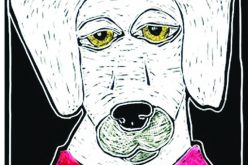By Terrah Baker
Technology seems to have a lot of downfalls — E-waste, toxic conditions for laborers, rising prices — but if we learn to take advantage of the technology, we can help make the world a better place. Here’s a compilation of mobile apps — with the help of EarthTalk and Mashable, a culturally relevant list-making website — that can help make your life, the life of those around you, and the world a better place.
The American Lung Association’s State of the Air app shows live color-coded air quality maps for any U.S. location and includes both ozone and particulate pollution counts. The app also provides air quality alerts, short-term forecasts and opportunities to learn more about air quality risks and to contact lawmakers to push for more stringent pollution regulations.
 SpareTime is a local organization, website and mobile app bridging the gap between those who have an interest in doing good, and nonprofits and organizations in need of volunteers. They seek to identify the organizations, groups, and individuals serving our community, and supplement their volunteer recruitment efforts. While the app is relatively new, there’s always something to take part in that helps better your community and yourself. Visit gosparetime.com.
SpareTime is a local organization, website and mobile app bridging the gap between those who have an interest in doing good, and nonprofits and organizations in need of volunteers. They seek to identify the organizations, groups, and individuals serving our community, and supplement their volunteer recruitment efforts. While the app is relatively new, there’s always something to take part in that helps better your community and yourself. Visit gosparetime.com.
Another way to find out who’s emitting what nearby is via aMobileFuture’s Pollution, a free app that compiles information from various pollution databases around the world and then shows users which big polluters are emitting what near them. Coverage includes 1,380 cities, mostly in Europe and the U.S.
Gone are the days of daring your friends or making bets without consequences. When you challenge your friends to Budge, the person who loses the challenge needs to donate an agreed upon amount to a charity of the winner’s choosing.
The GoodGuide is a free app that shows how any of 120,000 food, personal care and household products stack up in terms of sustainability, fair wages and even health risks. Users just snap a picture of an item’s bar code to get the low-down on whether or not it’s a “good” buy.
The free JouleBug app turns living greener into a game, taking specific sustainability-oriented steps such as reducing energy use, recycling more or buying local and translating these small acts into positive “units of impact.” Embedded videos demonstrate ways one can green up daily life.
Adair Systems’ 99 cents GasHog app makes it easy to track a car’s fuel efficiency. Enter the odometer reading and amount of fuel added each time you refill the tank and the app calculates the fuel economy of the previous tank and compares it to historical averages. The app also offers tips for improving fuel economy.
Avego’s free CarmaCarpooling app matches nearby drivers with riders to share the commute and the expense. At the end of the trip, the rider can send a payment through the system to the driver to cover a share of gas and wear-and-tear.
Donate a Photo allows app users to share a photo and make money for a charity of their choice. With every photo you share, Johnson & Johnson donates $1 to a cause of your choosing. The Donate a Photo app, available on iOS and Android, also lets you follow your friends’ photos, so you can keep up with your social life.
PaperKarma is a free app to help reduce junk mail. Users input their address information once and then snap a picture through the app of any unwanted junk mail. Behind the scenes, PaperKarma’s automated system notifies the publisher to take the user’s name and address off their list.
Did you know that with the money you save cooking three of your own meals, you could fund someone’s HIV medicine for three months? Instead is an iOS app that shows you how much you can save with simple tweaks in your lifestyle. Once you make those cheaper decisions, Instead encourages you to donate to a non-profit out of your savings.
Another popular app is Light Bulb Finder, a free app designed to help ease the transition from older incandescent bulbs to more energy efficient replacements. Users enter in their zip code—the app automatically inputs average regional electricity rates accordingly—and then choose which type of fixture, size/shape and wattage bulb(s) they are looking to replace. The app then suggests options that use less energy and shows how much money the user can expect to save with the newer bulb(s).










